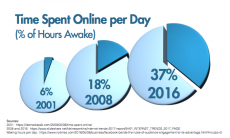One of the main reasons why messages fail is that the writers don’t know what their audiences want to hear. You probably know what you want to say; most organizations do. But, do you know what your audiences want to hear? Many leaders assume that they do, based on their years of experience and the voices of people around them. Often, they are mistaken.
The phrase “change is constant” was a cliche before the arrival of our global pandemic, but yikes! It’s an understatement now. You may think you know what’s in the hearts and heads of the people most important to your success. But, how old is that data? Plus, wouldn’t you rather know than just guess?
One of the reasons that messages fail, is that they focus on the organization, not the audience. Strong messaging balances what you need to say with what people need to hear—and what they need to feel. Missing both those marks is one of the most common reasons why messaging often falls flat. A messaging framework identifies those needs and creates a repeatable way to communicate, consistently and compellingly. Strong messaging balances what you need to say with what people need to hear—and what they need to feel.
Here’s how you can ensure that your messaging hits the mark by knowing what your audiences want to hear and feel:
Start by asking
Nothing beats market research for getting actionable data. As with most things, market research can be as straightforward or as complex as you like. If the thought of a full-on market research study overwhelms you, start off slowly.
Start with a simple and short online survey, using something like Google Forms or SurveyMonkey. Short is essential. Long surveys are annoying to take, and unless you’re a trained market research expert, they are difficult to analyze. Stick with the basics. As we’ve written before, the reporter’s “Who, what, when, where, why, and how” approach can serve as an excellent guide:
- Who are they now (e.g., age, gender, titles)?
- What are they struggling with now?
- Why is that such an issue now?
- When do they need what you are offering most? Or, when do they like to get information?
- Where are they finding the most challenges?
- How can you be of the most help?
Long surveys are annoying to take, and unless you’re a trained market research expert, they are difficult to analyze. Stick with the basics.Click to Tweet
Broaden Your View
Most organizations will invest time and money to understand their direct consumers. Leaving it there is another reason messages fail. There are two other audiences you must remember—employees and competitors.
- Employees. Any organization is only as effective as its employees are engaged. Nurturing and protecting that engagement requires open communication. Make certain you always know what is in the hearts and heads of your employees too.
- Competitors. We are all competing—competing for people’s time, passion, money, or support. What are the other organizations competing for the same things you are? What are they saying? A messaging audit can help you ensure that your messaging is relevant and differentiated. (Click here to download our free Messaging Audit outline.)
Putting It All Together
Once you have insight into what your audiences are thinking and feeling, it’s time to put it all together. As we’ve mentioned before in this blog, creating personas for the people most important to your organization’s success is a powerful tool for crafting messages. (For more information on the power of personas, check out How to Create a Buyer Persona. But, don’t let the word “buyer” limit you. This exercise is a powerful one for understanding everyone vital to your success.) Once you have personae identified, imagine each of them sitting in front of you. How would you speak to them? That’s your message.








